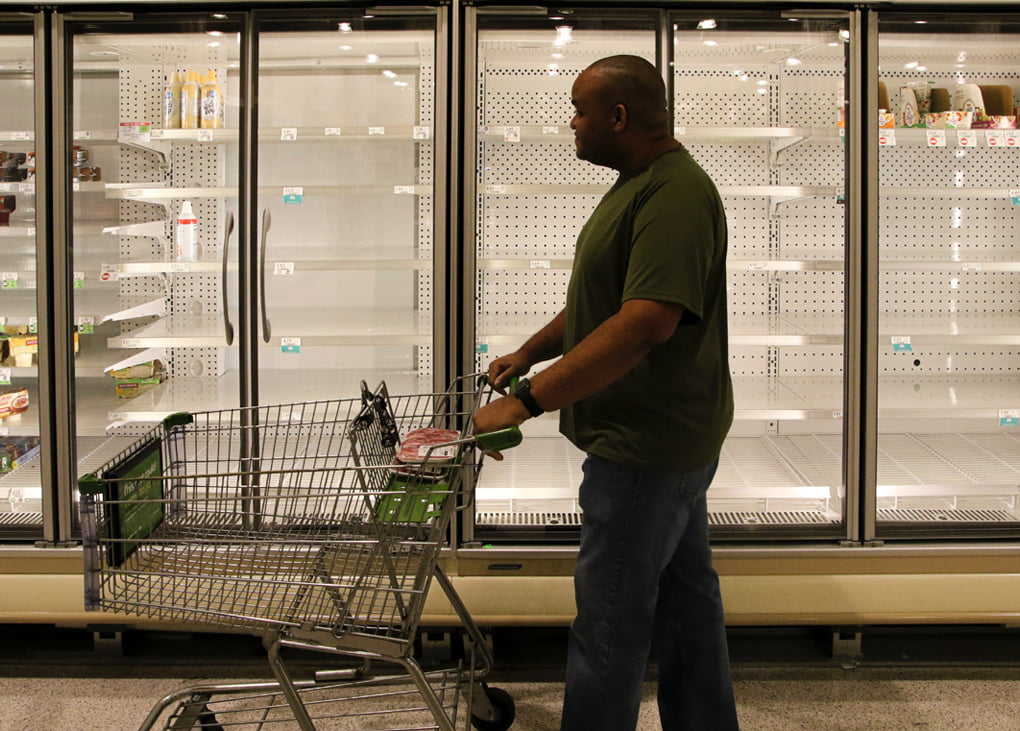Despite its tag as an “outgoing” refrigerant in the HFC phase-down, there are signs that R404A remains a go-to option for key sectors of Australia’s HVAC&R industry. According to experts, pressure from end-users for low first-cost and straightforward, low-risk solutions, and a lack of incentives to move to new technologies have made R404A an ongoing part of the refrigerant bank.
A stubborn presence
This phenomenon was one of the major narratives to emerge from the recent Refrigeration 2021 Conference, organised by the Australian Institute of Refrigeration, Air Conditioning and Heating (AIRAH). The scene was set by Peter Brodribb, M.AIRAH, from the Expert Group – the consulting firm behind the Cold Hard Facts reports that provide an inventory of Australia’s refrigerant bank and data on the wider HVAC&R industry.
Brodribb presented the usage of different HCFCs and HFCs in Australia from 2016 to 2019, with the numbers for R404A highlighted in red.
“In the 3,700 metric tonnes that we’re consistently consuming in the economy, the big standout is 404A,” he said. “It’s stubbornly remained at about 800 metric tonnes over the last four to five years, and that represents at least 20 per cent of all the refrigerant used in the economy, based on metric tonnes. Based on GWP, it’s certainly more than 35 per cent.”
The GWP – or global warming potential – of R404A is 3,922, making it one of the largest contributors to global warming among commonly used refrigerants, and an obvious target under the Kigali Amendment.
R404A was introduced in the mid-1990s as a replacement for ozone-depleting refrigerants such as R12 and R502, and later as a replacement for R22. It is widely used in low- and medium-temperature refrigeration applications, such as commercial refrigeration, supermarket display cases, cold rooms, transport refrigeration and process cooling.
Alarming levels of use
From the beginning of 2020, Europe banned the use of R404A in new commercial refrigeration applications. Australia is still using R404A, albeit with the expectation that it will gradually disappear under the HFC phase-down that restricts the import of high-GWP refrigerants.
But as Kirby HVACR’s Brett Hedge, M.AIRAH, revealed in his presentation on refrigerant solutions beyond R404A/R507, there are still “alarming” levels of use.
“In 2020 the use of R404A actually grew,” said Hedge. “’Stubborn’ is exactly the right term for it. Alternatives like R448 and R452 have a mere presence of about 5 per cent of the volume.”
While Hedge applauded the work being done in supermarkets to move away from R404A – often to transcritical CO2 solutions – he warned that smaller jobs were too often still going with the lowest cost option.
“Unfortunately, the phase-down is providing little or no incentive for any applications to change,” he said. “R404A is still the cheapest low-temperature refrigerant that is available.”
Hedge highlighted a lack of awareness among end-users about alternatives, and challenged consultants to talk to their clients about the ongoing costs of systems with high-GWP refrigerants.
“In five or 10 years’ time, what is that going to look like for an end-user?” Hedge said. “Are we going to be in the zone of $100 a kilo for some of these synthetic refrigerants? Look at what R22 costs today, and know that the phase-down is going to bring down a harder regulation on R404A.
“We need to steer people past the first costs so that they make the right choice and look at all the alternatives.”
Promoting alternatives
During the contractors panel session at the Refrigeration 2021 conference, the theme was raised by David West, Affil.AIRAH, from West Refrigeration. He said that his firm had found it difficult to sell alternative approaches – particularly natural refrigerants over synthetics.
“A lot of tenders that come to us are from builders for cold storage,” he said. “They’re looking for the cheapest option. Even other customers who we can get a direct relationship with are still looking for the cheapest option.
“We’ll probably get as close as about 20 per cent on the initial installation cost, and there doesn’t seem to be any assistance on us getting closer. Why isn’t the government doing anything to assist us in this area? It’s a big chunk of the business that we do, and their appetite right now is synthetic refrigerants. Why are we left hanging, trying to do it ourselves, and trying to push things forward ourselves?”
The thread was picked up again by Glaciem Cooling’s Julian Hudson, M.AIRAH, who presented on a project in which a commercial HVAC system was retrofitted to move from R22 to CO2.
“You have to move forward,” Hudson said. “You can’t keep on doing the same thing and going around in this cycle.”
But he also acknowledged the temptation to follow a well-trodden path.
“I actually said to my team about three months ago, I want to go back to putting R404A in because it’s easy – you just buy the units off the shelf, you install it, you know it’s going to behave and it’s just easy doing systems like this.”
A.G. Coombs Strategic Development Director Bryon Price, F.AIRAH, echoed these thoughts, with a broader view of commercial buildings.
“When you look at why things are the way they are, there’s some big-picture issues,” Price said. “It really is a commoditised, de-risked, fee-constrained, first-cost-focused industry.”
But he also offered some hope that things are set to change – not specifically around R404A, but more generally in the building and construction industries.
“The net zero piece is driving change like never before,” he said. “We’ve got to squeeze a whole lot more out of our built environment now – around refrigerants and more effective systems.”
For more information about the Refrigeration 2021 Conference, click here.
 Mark Vender
Mark Vender


Leave a Reply to Stefan Jensen Cancel reply